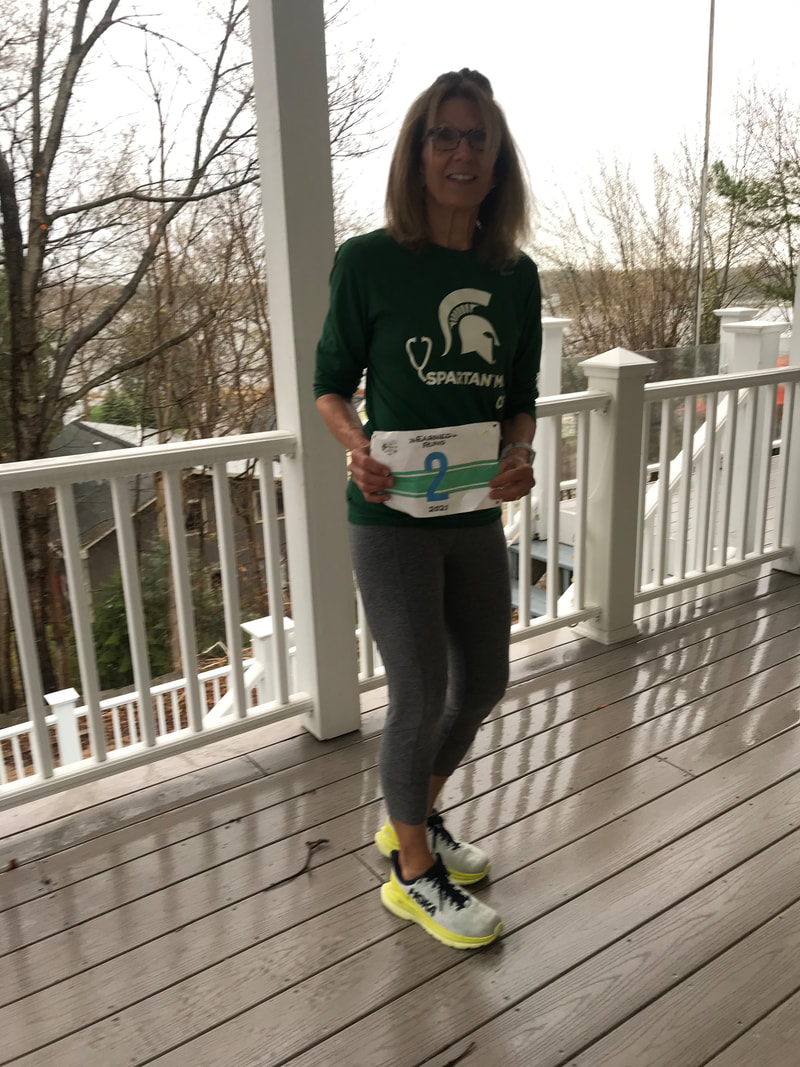BLOG
|
|
BOSTON 2018: THE INTERNATIONAL ELITE RUNNERS WHO WILL BE COMPETING in the Boston Marathon were announced in January this year by the race’s long time primary sponsor, John Hancock, headquartered in Boston as a division of an international financial services corporation.
Andrew Mahoney, who discussed the field in a piece for boston.com indicates that 6 previous champions will participate and that, overall, 23 Olympians will be lining up at the front of the start. A complete listing of the top competitors was provided by the BAA in a news release. Earned Runs identified the elite USA athletes in an earlier blog post. The top ten athletes from countries outside the US (by personal best finish time) are listed below in the men’s and women’s races, per the BAA press release. This has nothing to do with science, you might be thinking. Be patient; it’s coming. A glance at the lists below will show that Africans are prominently represented in this event, especially the men. Kenyans dominated the race last year. Among the women will be the 2017 Boston Marathon champion Edna Kiplagat of Kenya, Buzunesh Deba of Ethiopia who holds the course record, and won the Marathon in 2014, and Mamitu Daska also of Ethiopia who placed third in the TCS -NYC Marathon after holding in with Shalane Flanagan for most of that race. This assessment was provided by Megan Roos in an article for womensrunning.competitor.com. Mahoney reports on the men’s field. It will include Geoffrey Kirui of Kenya, who won the 121stBoston marathon. He says several Kenyan men who ran personal best times in 2017 will debut at this year’s race: Norbert Kigen, Evans Chebet, Felix Kandie, and Philemon Cherop. Their PR’s were good enough to land them in the list below for this year by time! Because of Kenyan dominance there’s been a good deal of speculation on the reasons why. There have been investigations into the science of Kenyan running including physiology, biomechanics, nutrition, and hydration. Scientists Nicholas Tam and colleagues from the University of Cape Town, South Africa were interested in bone health, because it hadn’t yet been studied in this group. The Journal of Sport Sciences published their results in February 2018, “Bone health in elite Kenyan runners”, perfect timing in advance of the Boston Marathon it seems. Runners tend to consider their weight-bearing activity as protective when it comes to bone health All that leg pounding should be translating to the amount of impact loading that is good for bone mineral density (BMD), one measure of bone strength, we think. Unlike swimmers and cyclists, runners count the times per minute their feet strike the ground. We should have excellent bones, right? Possibly not*. Low BMD in the lumbar spine has been noted in white runners, and felt due to a variety of factors, including an absence of resistance training, increased running-only training volume (distance), and reduced energy availability. And since Kenyans are thought to be at high risk for reduced energy availability, the scientists who performed this research wanted to study bone health in this elite group of athletes. In their study, the body composition (fat mass, lean mass, etc.) and BMD at specific sites, including that of proximal femur (PF) and lumbar spine (LS), “was measured in 15 elite male Kenyan runners and 23 apparently healthy” controls comprised of male South Africans with different ethnic backgrounds. Variables associated with impact loading like training volume (running distance per week) and biomechanics were determined in the Kenyans. In terms of descriptive characteristics, the elite Kenyans were younger, lighter, and shorter than controls, with a mean body mass index (BMI) of 18.8 compared to 24.4 of the controls. Their whole-body fat mass, lean mass, and bone mineral content was significantly lower even after adjusting for age and BMI. Results of dual x-ray absorptiometry (DXA) studies that assessed BMD revealed that the Kenyans had scores in the femoral neck and proximal femur similar to that of controls, and that the proximal femur BMD results were tied to greater training load and higher leg joint stiffness. BMD scores in the LUMBAR SPINE were not significantly lower than controls BUT six (40%) Kenyans had scores in the range that would be considered ABNORMAL (<-2.0 Z-score) as opposed to only 1 of the 23 South African controls. There were no significant ties of lower lumbar spine BMD to training load or leg joint stiffness. Because BMD of the proximal femur was tied to impact loading and biomechanics (the higher these variables, the higher BMD) and BMD of the lumbar spine was NOT in their study, the scientists looked for an explanation. They considered that the type of bone at each site might be related. Cortical bone, as found in the proximal femur, is known to be influenced by impact loading. Trabecular bone on the other hand, as found in the lumbar spine, is thought to be less influenced by it, and more likely to be influenced by metabolic factors like nutrition. Other studies, they said, specifically suggested that a “negative energy balance” could affect bone density on the lumbar spine, “which has been previously identified in elite Kenyan runners” and has been “associated with a low [Lumbar Spine] LSBMD in adolescent runners”. Running as the only form of physical exercise might be a factor too, they thought. It was possible that adding resistance training which specifically targeted impact loading on the skeletal spine could counteract the changes noted in the elite Kenyan runners’ lumbar bones. The authors also felt population differences might be in play. The reference values against which the z-scores of BMD were compared came from a database that did not include Africans, specifically persons of East African descent. The low scores associated with risk of future osteoporosis and fractures might not be clinically relevant in Kenyans. This study did not collect diet information and did not specifically ask for training details from the Kenyan elites. The physical activity habits of the controls weren’t described at all, so could not be examined or compared. The researchers admit there were study limitations and that the reasons for the results were not determined. The article concluded with a proposal that a long-term injury surveillance system might be established to document incidence and types of injuries in Kenyans, who represent a significant proportion of international runners. The reason for Earned Runs highlighting this bit of science today is to remind runners that being healthy over an entire lifetime may require more effort that just running. Runners may feel and look healthy, especially with a light body that allows greater speed. But the price to be paid for this body composition or poor nutrition may be exacted decades later. At times of rapid bone loss, just after menopause in women, or greatest bone building, in adolescence, the cost may be higher. Endurance sport participants may be at risk for poor bone health it seems, when calorie intake to meet the demands of energy expended in high volume training and nutrients to repair and maintain muscle and bone are deficient. And when training is restricted to running rather than strength conditioning designed to load and impact spinal bones. Earned Runs thinks the idea of surveillance is brilliant. Perhaps in following and collecting injury data on this and other running groups, including both men and women, more can be learned about the bone disease osteoporosis, and how it can be successfully prevented and potentially treated in athletes and all people. Today, Kenyans and runners from around the world are marathon stars, dazzling spectators and followers with their speed and endurance. What is their fate tomorrow? In the sport of American football, it was learned that head impacts play a role in the development of a terrible degenerative brain disease. Best to study now what might be occurring in endurance sports than later observe the emergence of a preventable condition in athletes who now thrill us in competition but unknowingly sacrifice their future health. It’s not worth it. RUN & MOVE HAPPY! "Bone health in elite Kenyan runners" https://www.ncbi.nlm.nih.gov/pubmed/28406358 *NOTE: one article on the topic can be found through this link: https://pdfs.semanticscholar.org/4987/3fdb8de585a53f534389bd772391552d48c7.pdf https://www.ncbi.nlm.nih.gov/pmc/articles/PMC4955555/ https://www.boston.com/sports/boston-marathon/2018/01/11/six-previous-champs-among-elite-field-for-2018-boston-marathon http://womensrunning.competitor.com/2018/01/boston2018/boston-marathon-international-elite-fields-2018_84494 https://www.nytimes.com/2017/04/17/sports/boston-marathon-2017-kenyans-sweep-the-main-events.html https://www.npr.org/sections/goatsandsoda/2014/11/04/361403249/what-makes-kenyas-marathon-runners-the-worlds-best http://www.baa.org/news-and-press/news-listing/2018/january/john-hancock-announces-2018-boston-marathon-international-elite-field.aspx https://www.johnhancock.com/who-we-are.html NOTE: MEN Athlete Name/Country/Personal Best Marathon Tamirat Tola/Ethiopia/2:04:11 (Dubai, 2017) Lemi Berhanu/Ethiopia/2:04:33 (Dubai, 2016) Lelia Desisa/Ethiopia/2:04:45 (Dubai, 2013) Robert Kigen/Kenya/2:05:13 (Amsterdam, 2017) Wilson Chebet/Kenya/2:05:27 (Rotterdam, 2011) Evans Chebet/Kenya/2:05:30 (Valencia, 2017) Felix Kandie/Kenya/2:06:03 (Seoul, 2017) Geoffrey Kirui/Kenya/2:06:27 (Amsterdam, 2016) Philemon Rono/Kenya/2:06:52 (Toronto, 2017) Yuki Kawauchi/Japan/2:08:14 (Seoul, 2013) WOMEN Athlete Name/Country/Personal Best Marathon Aselefech Mergia/Ethiopia/2:19:31 (Dubai, 2012) Edna Kiplagat/Kenya/2:19:50 (London, 2012) Buzunesh Diba/Ethiopia/2:19:59 (Boston, 2014) CR Eunice Kirwa/Bahrain/2:21:17 (Nagoya, 2017) NR Mamitu Daska/Ethiopia/2:21:59 (Frankfurt, 2011) Masai Perez/Mexico/2:22:59 (Chicago, 2006) NR Caroline Rotich/Kenya/2:23:22 (Chicago, 2012) Jessica Augusto/Portugal/2:24:25 (London, 2014) Gladys Chesir/Kenya/2:24:51 (Amsterdam, 2017)
0 Comments
Your comment will be posted after it is approved.
Leave a Reply. |
BRIDGE TO PHYSICAL SELF
Running, walking, and fitness activities enable us to experience our physical selves in a world mostly accessed through use of fingers on a mobile device. AuthorEARNED RUNS is edited and authored by me, runner and founder. In 1978 I began participating in 10K road races before 5Ks were common. I've been a dietitian, practiced and taught clinical pathology, and been involved with research that utilized pathology. I am fascinated with understanding the origins of disease as well as health and longevity. Archives
November 2023
CategoriesNew! Search Box
Earned Runs is now searchable! Check it out...
|


 RSS Feed
RSS Feed